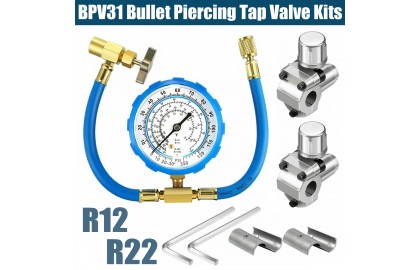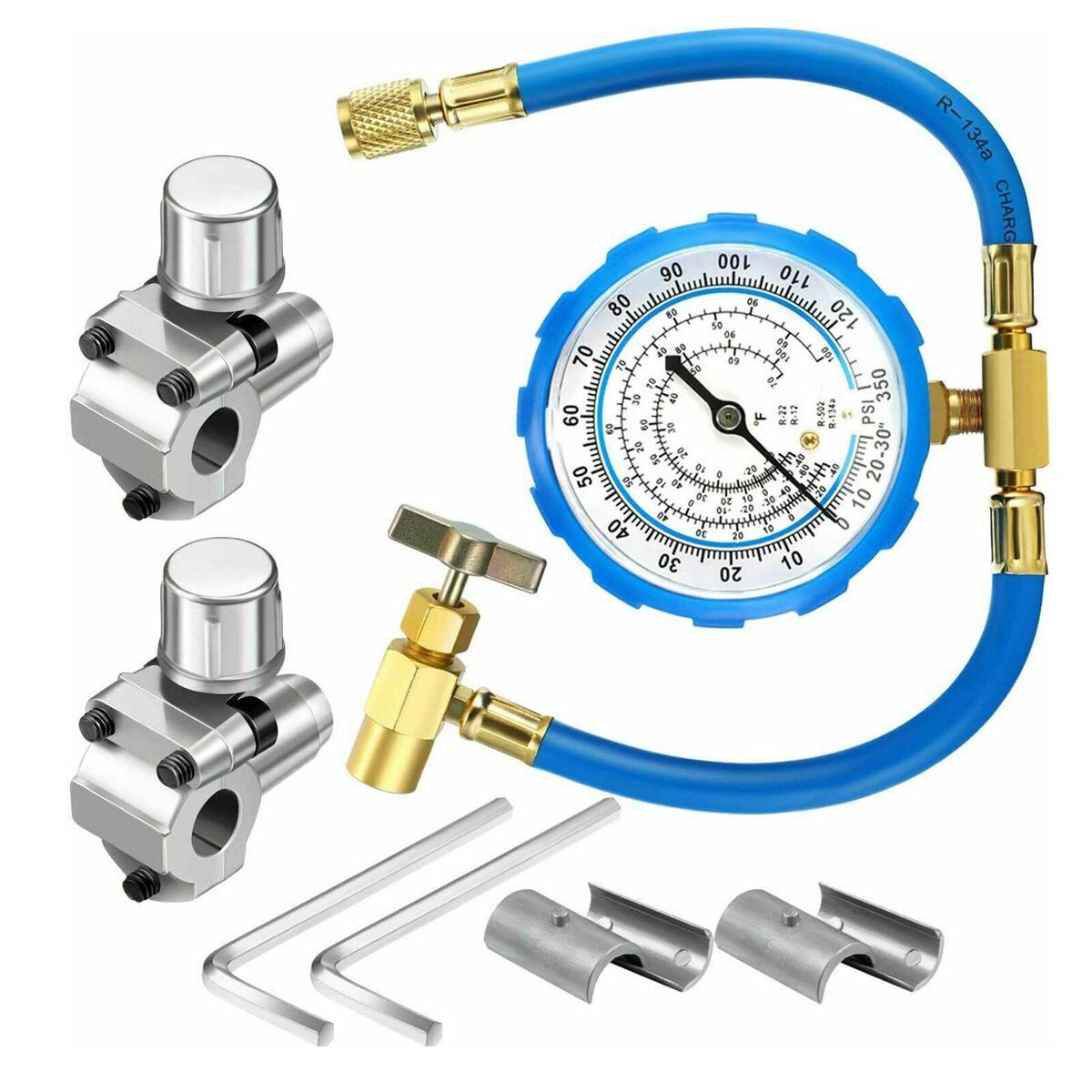Check the number of meters and ammeters for fluoride pressure in air conditioners


1. When the ambient temperature on the outdoor side is about 35 degrees, the equilibrium pressure of the refrigeration system is about 1MPa (10kgf/cm²), and the low-pressure value of the return air for refrigeration work is about 0.5 MPa (5kgf/cm²), that is: the refrigeration return Air and low-pressure 0.5MPa/1MPa balance pressure.
Note: If there is insufficient refrigerant and residual air in the refrigeration system of the air conditioner, it will still show a basically normal equilibrium pressure, but when the low pressure of the refrigeration return air is detected, the low pressure will be low, and the cooling effect will be significantly reduced at the same time. When there is a serious shortage of refrigerant when running under refrigeration, the liquid pipe will be frosted, or if it is more serious, the detected low-pressure pressure will be negative.
2. When the outdoor ambient temperature is generally about -5 degrees, the equilibrium pressure of the refrigeration system is about 0.55-0.6MPa, and the low-pressure pressure of the forced refrigeration operation is about 0.26-0.3MPa. The lower the indoor ambient temperature, the lower the low pressure value of the system return air)
1 Test, whether the air conditioner can reach the set temperature (an air conditioner with a cooling capacity that matches the room) after half an hour of turning on the air conditioner, and whether the running light is on for a while and then off for a while (the compressor is like a refrigerator, on and off for a while), otherwise, it is Fluoride deficiency.
2. Look, after 15 minutes of starting the machine, open the panel of the indoor unit, and you should see that the evaporator is evenly covered with condensed water. If half of it is missing or frosted, it is abnormal.
3. Use a thermometer to measure the temperature difference between the air inlet and outlet of the indoor unit. If the difference is more than 10 degrees, it is normal. The difference of air conditioner with good effect can reach about 15 degrees. If the temperature difference is too small, fluorine is deficient.
4. Touch, if the outdoor unit is in a place that can be touched (it must be safe), after 15 minutes of starting up, when you touch the two valves of the outdoor unit, there should be a large temperature difference. Frost in the thin tube indicates a lack of fluorine, and frost in the thick tube indicates poor circulation in the system.
5. Check, use a pressure gauge to measure and check the operating pressure of the air conditioner (users are not advised to check, as there are potential safety hazards),
In addition, you can also check whether the indoor unit joint and outdoor unit valve are greasy. If there is an obvious greasy phenomenon, it indicates that there is leakage. Because oil and fluorine are mutually soluble, fluorine leakage will leak oil, and oil leakage will leak fluorine!
Note: When the outdoor ambient temperature is generally about -5 degrees, the high pressure of the air-conditioning system compressor exhaust is generally about 1.8-2.2MPa, (when the indoor ambient temperature corresponds to about 20 degrees), the one-to-two air-conditioning heating high-pressure The pressure is slightly lower. When the air conditioner is running in the refrigeration state (the inverter should be set in the fixed frequency refrigeration operation state), the normal refrigeration low pressure range should be about 0.4-0.6 MPa. Look at the air conditioner fluoride pressure gauge. The number corresponding to the pressure in the fluorine 22 pressure gauge refers to the evaporation temperature of fluorine 22 under the corresponding pressure. When any air conditioner using Freon 22 is operating in a refrigeration state, the pressure at an ambient temperature of 25 to 45 degrees should be [0.45-----0.6MPa]. Below is one of the most common pressure gauges.
